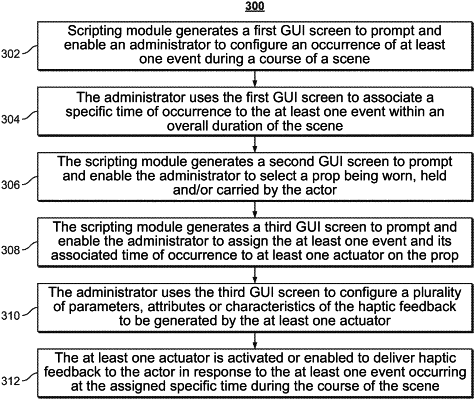| CPC G06F 3/016 (2013.01) [A63F 13/212 (2014.09); A63F 13/285 (2014.09); G06F 3/011 (2013.01); G06F 3/0482 (2013.01); G06F 3/04842 (2013.01); G06V 40/103 (2022.01); G06V 40/23 (2022.01)] | 19 Claims |

|
1. A method of enabling a capture of movement data, the method comprising:
coupling one or more actuators to an object adapted to be worn, held, or carried by a performer during a scene, wherein each of the one or more actuators is coupled to the object at predefined locations and wherein the one or more actuators are configured to generate and deliver feedback to the performer;
generating at least one graphical interface adapted to receive inputs from a user using a computing device;
via the at least one graphical interface, receiving an identification of at least one event occurring during a course of the scene;
via the at least one graphical interface, associating at least a time of occurrence to the at least one event within an overall duration of the scene;
via the at least one graphical interface, receiving an identification of the object;
via the at least one graphical interface, assigning the at least one event and the associated time of occurrence to at least one of the one or more actuators on the object;
via the at least one graphical interface, configuring at least one of a plurality of parameters of the feedback; and
activating the one or more actuators to generate and deliver the feedback to the performer in response to the at least one event taking place at the associated time of occurrence.
|